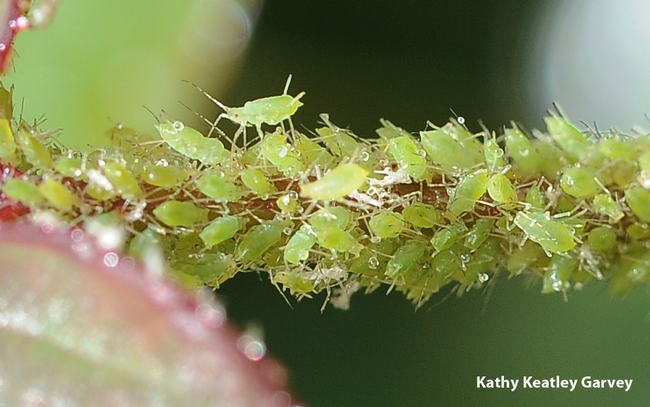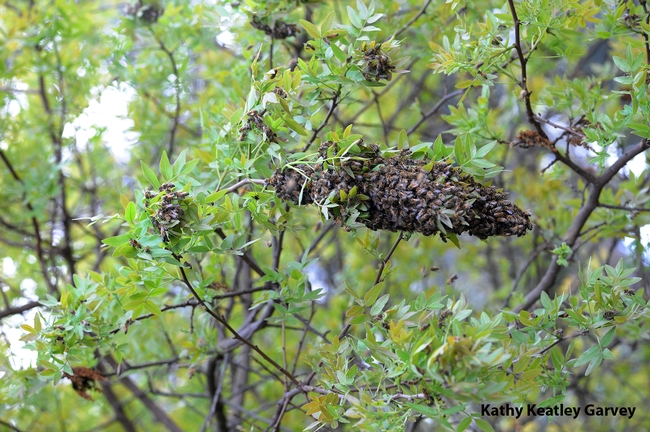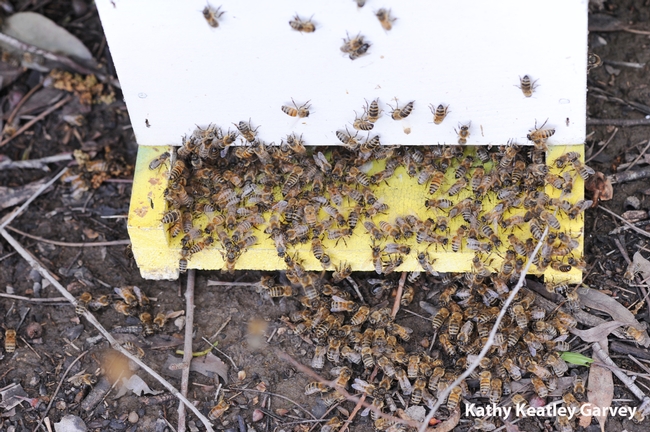UC Blogs
Bright Color for Summer
This is the year I’ve decided to plant annuals in the backyard (or as it now known our private marsh). When you are living 6 feet above sea level as most of Suisun City is, you have a yard with tendency toward standing water.
Last year, the game plan was putting pots – big ones – on the patio so when walking down from the deck, one would pass between pots full of color, pots full of dwarf orange trees, and other delightful plants. Okay, so it was very cold, frigid even and the orange and lemon trees have a massive display of dead branches right now; and yes, to your question, we did cover them every night! So on to the game plan for the summer . . .
The last time I grew zinnias (Zinnia elegans) I was 6 years old and planting seeds around my Grandmother’s tree in her backyard. Since I got blooms, I was happy, Grandma was happy, and so were the neighbor’s dogs!
Fast forward many years and many seed catalogs to this past winter. Zowie, wowie! I couldn’t believe the color combinations and arrangements that are available now. Grabbing pen and paper, I made copious notes about which to order.
I always thought that a zinnia was a zinnia -no difference except for coloring – wrong! According to the new Sunset Western Gardening Book, there are seven (7) different varieties of these longtime favorites for colorful, round flowers. Two are perennial: Z. acerosa which prefers a warmer clime than in our zone and Z. grandiflora which does. Unfortunately, the perennials come in a single color only (white rays veined in green on the underside for Z. acerosa and bright yellow with an orange eye for the Z. grandifora.
Looking over the paragraph above, I decided to check my seed packets to see what I had purchased. Only 2 packets are listed as elegans while all the others merely state names: ‘Purple Prince’ which is purple; ‘Candy mixed’ which are solid colors; ‘Queen Red Lime’ described as 3” blooms with maroon-red petals and lime centers ( I tried getting seeds from 3 seed companies before I was able to get a packet; ‘Picks Carmine Rose’; Zinnia profusion Apricot hybrid; Zinnia zahara ‘Starlight Rose’ with a white ray w/ a pink splash; “Peppermint Improved mix” with blots of color on the white rays as though one had flicked a paintbrush toward the flowers; and then ‘Zowie Yellow Flame’, bright yellow rays with splashes of brilliant red in the center.
I think I shall have the brightest of annual color in the neighborhood. I just have to remember that there is nothing to be gained by planting early, as zinnias are somewhat like tomatoes – they merely wait in place until the weather and soil warm up. Rather than start the seeds in the house and go through the hardening-off process and then transplanting, I’ll plant the seeds directly in the garden. THEN, begins the lookout for snails and slugs. I will be ready!

Zinnia 'Queen Red Lime' (photo from About.com Gardening)
Oh, Those Pestiferous Aphids!
By now, you're probably seen enough aphids to last you for the entire year. That's why we're looking forward to hearing Bryony Bonning speak on...

Pea aphids on a rose leaf. (Photo by Kathy Keatley Garvey)

Pea aphids claim a rose stem. (Photo by Kathy Keatley Garvey)
Heavenly Bamboo
My house is about 85 years old. Some of the original shrubs and vines are still growing here according to later generations of the original family and old photos. One shrub in particular, a Nandina domestica (heavenly bamboo) is especially noteworthy.
I don’t know if its large size was intentional or just tolerated, but when we moved into the house 36 years ago it was over the top of an 8-foot fence. Even more impressive, it attained that height after fighting through layers of ivy that covered the fence to a 3-foot width on both sides. For many years I marveled at that old shrub. The ivy was strong and wildly aggressive but the Nandina continued to assert itself. Just when I’d think the ivy had suppressed it, heavenly bamboo would pop through with its little white flowers.
The day came when we finally removed the deteriorating old fence and of course the ivy had to come with it. I fretted over the fate of the remains of the Nandina and ultimately could not let it go the way of the ivy. We (that would be my husband) carefully dug out what was left of the plant along with its ancient roots. Neither of us had high hopes for it but I just had to give it a chance after all those years of perseverance.
My husband dug a hole in another spot feeling more like a gravedigger than a gardener. We cut back dead canes that were an inch and a half in diameter. I trimmed and fertilized and watered and waited for good news.
Back from the dead about eighteen months later, my Nandina domestica reigns supreme! It came back and the ivy did not. Maybe without the plucky Heavenly Bamboo to battle, the ivy thought life was just not worth living.
Kaffka, partners awarded $2 million to develop biofuel
The Biodiesel Industries of Ventura was awarded $2 million grant for research and development of biodiesel fuel, according to a report by Marjorie Hernandez of the Ventura County Star.
Biodiesel Industries has partnered with Stephen Kaffka, director of the California Biomass Collaborative and UC Cooperative Extension specialist in the Department of Plant Sciences at UC Davis.
Kaffka will conduct research to develop viable biofuel feedstocks at test plots at UC Davis and in Salinas, the Imperial Valley and Five Points in the Central Valley, according to the article.
Biodico President Russell Teall said, "The goal is to develop innovative solar cogeneration, anaerobic digestion and gasification. While Dr. Kaffka will look at the agronomics, Diener will take those results and use them in a larger context. We will be able to take biomass, which can be gasified and used to make heat and power that will provide a very clean form of combustion."
Teall said the project should start in June, with various equipment in place by August or September.
It Happened on Friday the 13th
It happened on Friday the 13th. It was the first swarm of the season at the Harry H. Laidlaw Jr. Honey Bee Research Facility on Bee Biology Road,...

Honey bee swarm on the Harry H. Laidlaw Jr. Honey Bee Facility grounds on Friday the 13th. (Photo by Kathy Keatley Garvey)

Bee breeder-geneticist Susan Cobey catches the swarm. (Photo by Kathy Keatley Garvey)

Bees enter a strategically placed hive. (Photo by Kathy Keatley Garvey)


